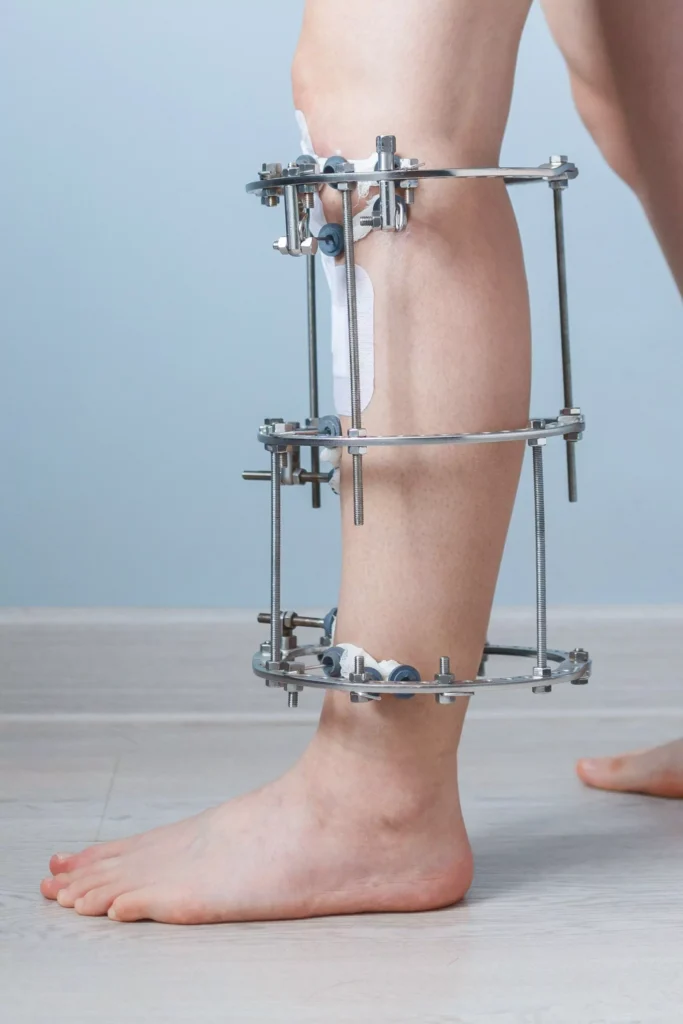Improving Mobility and Function
Foot and limb deformities can affect mobility, posture, and overall quality of life. These conditions may be congenital (present at birth) or develop due to injury, illness, or underlying medical conditions. Early diagnosis and appropriate treatment can help correct deformities, relieve pain, and restore normal function.
Deformities can range from mild structural abnormalities to severe conditions that impact walking and daily activities. Treatment options vary depending on the severity of the deformity and the patient’s age, lifestyle, and overall health.
Common Types of Foot & Limb Deformities
Congenital Deformities
- Clubfoot – A birth defect where the foot is twisted out of shape or position.
- Congenital Vertical Talus – A rare condition where the sole of the foot faces upward.
- Metatarsus Adductus – The front part of the foot is turned inward.
Acquired Deformities
- Flatfoot (Pes Planus) – The arch of the foot collapses, causing pain and instability.
- Bunions & Hammertoes – Bony bumps and toe misalignments affecting foot structure.
- Limb Length Discrepancy – One leg is shorter than the other, affecting gait and posture.
- Post-Traumatic Deformities – Bone misalignment following fractures or injuries.
Neuromuscular Deformities
- Cerebral Palsy-Related Deformities – Muscle imbalances affecting limb positioning.
- Charcot-Marie-Tooth Disease – A condition leading to high arches and foot weakness.
- Poliomyelitis-Related Deformities – Leg and foot deformities caused by past infections.
Signs & Symptoms of Foot & Limb Deformities
- Pain, discomfort, or difficulty walking
- Visible misalignment of the foot or limb
- Uneven shoe wear or difficulty finding well-fitted footwear
- Recurrent ankle sprains or instability
- Limited range of motion in the foot, ankle, or knee
Diagnosis of Foot & Limb Deformities
- Physical Examination – Assessing alignment, gait, and functional limitations.
- X-rays & Imaging Tests – Used to evaluate bone and joint structures.
- Gait Analysis – Analysing walking patterns to identify abnormalities.
- CT or MRI Scans – Recommended in complex deformities for detailed assessment.
Treatment Options for Foot & Limb Deformities
Non-Surgical Treatment
- Custom Orthotics & Bracing – Supports foot alignment and improves stability.
- Physiotherapy & Strengthening Exercises – Helps improve muscle balance and mobility.
- Serial Casting & Ponseti Method (For Clubfoot) – Gradual correction using casting techniques.
- Pain Management – Anti-inflammatory medications and lifestyle modifications.
Surgical Treatment
- Tendon Lengthening & Transfers – Adjusting soft tissues to improve alignment.
- Corrective Osteotomy – Cutting and repositioning bones for improved function.
- Limb Lengthening Surgery – Gradual bone elongation techniques using internal or external devices.
- Joint Fusion (Arthrodesis) – Stabilising the joint in severe deformities.
Why Choose Advanced Orthopaedics for Foot & Limb Deformity Correction?
Specialist Orthopaedic Care
Led by Dr Sarbjit Singh, a Senior Consultant Orthopaedic Surgeon, our clinic provides evaluation and customised treatment plans for foot and limb deformities.
Comprehensive Treatment Approach
We offer both conservative and surgical treatment options, ensuring the best possible outcome for each patient.
Rehabilitation & Support
Our structured rehabilitation programs focus on restoring mobility, strength, and function, promoting long-term recovery.
Take the Next Step
If you or your child has a foot or limb deformity, early intervention can help improve mobility and prevent complications. Schedule a consultation with our team at Advanced Orthopaedics to explore the best treatment options for your condition.





